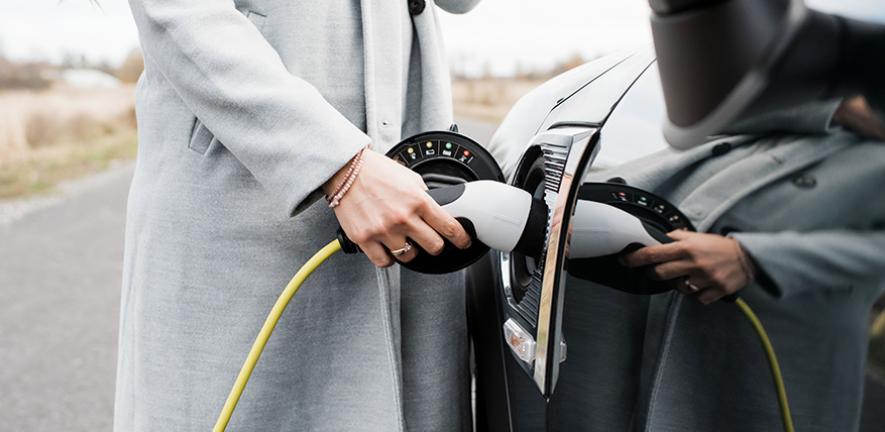
Scientists have made a breakthrough in understanding and overcoming the challenges associated with nickel-rich materials used in lithium-ion batteries.
Scientists have made a breakthrough in understanding and overcoming the challenges associated with nickel-rich materials used in lithium-ion batteries.
This will enhance the stability and longevity of these lithium-ion batteries, paving the way for more efficient and reliable energy storage systems
Annalena Genreith-Schriever
Nickel is already used in lithium-ion batteries, but increasing the proportion of nickel could significantly improve battery energy density, making them especially suitable for electric vehicles and grid-scale storage. However, practical applications for these materials have been limited by structural instability and the tendency to lose oxygen atoms, which cause battery degradation and failure.
The researchers, led by the University of Cambridge and the University of Birmingham, found that ‘oxygen hole’ formation – where an oxygen ion loses an electron – plays a crucial role in the degradation of nickel-rich battery materials. These oxygen holes accelerate the release of oxygen that can further degrade the battery’s cathode, one of its two electrodes. Their results are reported in the journal Joule.
Using a set of computational techniques on UK regional supercomputers, the researchers examined the behaviour of nickel-rich cathodes as they charged. They found that during charging, the oxygen in the material undergoes changes while the nickel charge remains essentially unchanged.
“We found that the charge of the nickel ions remains around +2, regardless of whether it’s in its charged or discharged form,” said Professor Andrew J Morris, from the University of Birmingham, who co-led the research. “At the same time, the charge of the oxygen varies from -1.5 to about -1.
“This is unusual, the conventional model assumes that the oxygen remains at -2 throughout charging, but these changes show that the oxygen is not very stable, and we have found a pathway for it to leave the nickel-rich cathode.”
The researchers compared their calculations with experimental data and found that their results aligned well with what was observed. They proposed a mechanism for how oxygen is lost during this process, involving the combination of oxygen radicals to form a peroxide ion, which is then converted into oxygen gas, leaving vacancies in the material. This process releases energy and forms singlet oxygen, a highly reactive form of oxygen.
“Potentially, by adding compounds that shift the electrochemical reactions from oxygen more to the transition metals, especially at the surface of the battery materials, we can prevent the formation of singlet oxygen,” said first author Dr Annalena Genreith-Schriever from the Yusuf Hamied Department of Chemistry. “This will enhance the stability and longevity of these lithium-ion batteries, paving the way for more efficient and reliable energy storage systems.”
Lithium-ion batteries are widely used for various applications because of their high energy density and rechargeability, but challenges associated with the stability of cathode materials have hindered their overall performance and lifespan.
The research was supported in part by the Faraday Institution, the UK’s flagship battery research programme.
Reference:
Annalena R Genreith-Schriever et al. ‘Oxygen Hole Formation Controls Stability in LiNiO2 Cathodes: DFT Studies of Oxygen Loss and Singlet Oxygen Formation in Li-Ion Batteries.’ Joule (2023). DOI: 10.1016/j.joule.2023.06.017
Adapted from a University of Birmingham media release.
For more information on energy-related research in Cambridge, please visit Energy IRC, which brings together Cambridge’s research knowledge and expertise, in collaboration with global partners, to create solutions for a sustainable and resilient energy landscape for generations to come.

The text in this work is licensed under a Creative Commons Attribution-NonCommercial-ShareAlike 4.0 International License. Images, including our videos, are Copyright ©University of Cambridge and licensors/contributors as identified. All rights reserved. We make our image and video content available in a number of ways – as here, on our main website under its Terms and conditions, and on a range of channels including social media that permit your use and sharing of our content under their respective Terms.




